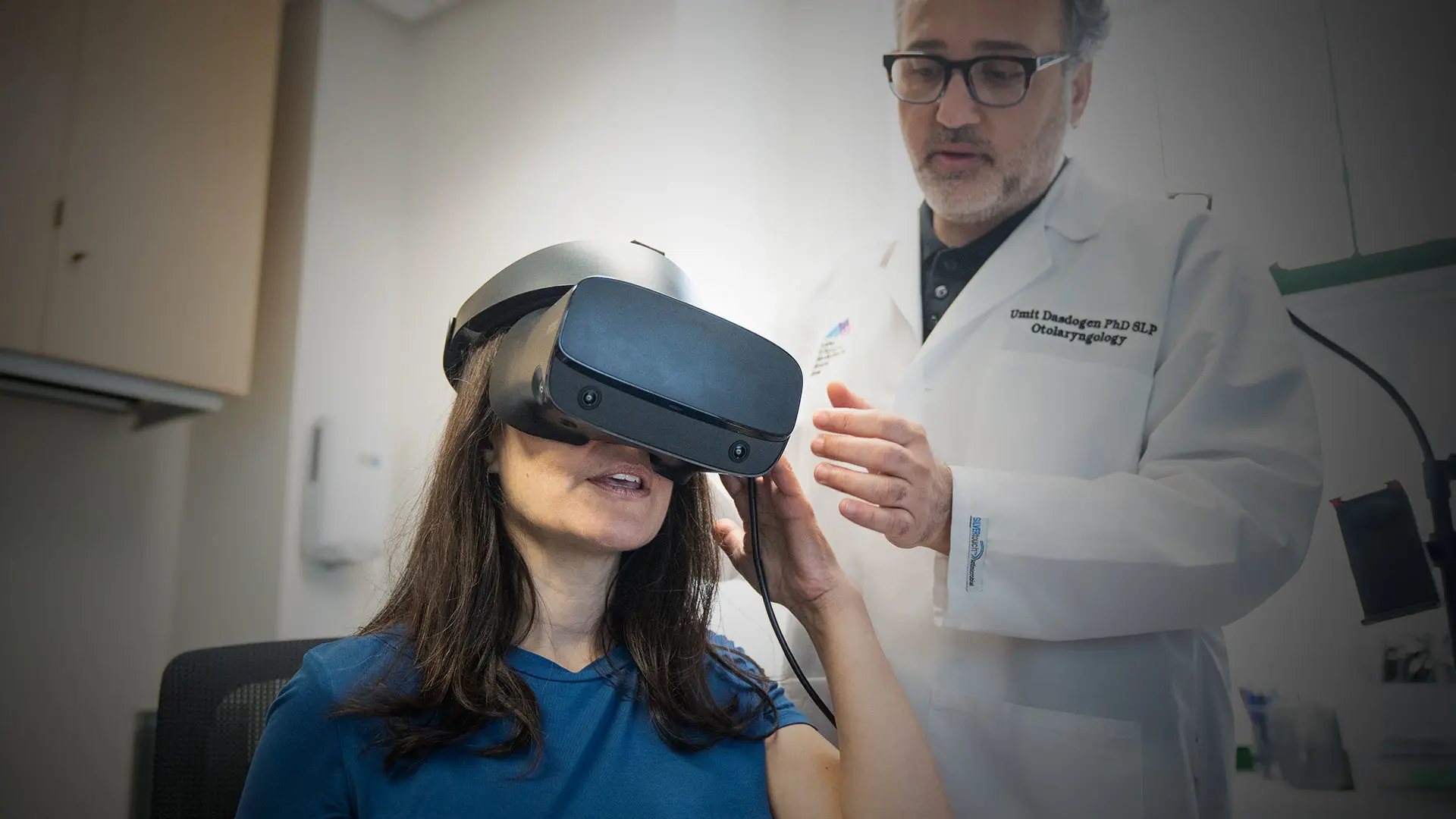How can speech language pathologists help patients successfully transfer the behavioral voice therapy techniques they learn in clinical environments into the bustle of the real world? The answer, according to Ümit Daşdöğen, PhD, CCC-SLP, is to bring the real world into the clinical realm.
The Mount Sinai speech language pathologist is exploring the potential of using immersive virtual reality (IVR) in voice therapy to simulate the many different scenarios that patients encounter every day. By exposing patients to various spatial dimensions, speaker-listener distances, and facial expressions via IVR, he suggests that bringing real-world situations into clinical settings can improve therapeutic efficiency, helping patients reverse pathology and return to functional voice use.
“One of the theories in motor skill learning is specificity of learning principle, which posits that we generalize skills if we experience during practice what we do in the real world,” explains Dr. Daşdöğen, Research Director, Speech and Language Pathology, The Grabscheid Voice and Swallowing Center of Mount Sinai, and Assistant Professor, Otolaryngology, Icahn School of Medicine at Mount Sinai. “With IVR, we are able to simulate real-life situations in clinical settings and better prepare patients to go out into the world.”
“This technology has the potential to address the difficulty patients have with bringing generalizations of vocal skills learned in therapy to the real world. This is a major problem that has not been solved,” adds Mark Courey, MD, Division Chief of Laryngology, and Vice Chair of Quality, Otolaryngology − Head and Neck Surgery, Mount Sinai Health System; Director, The Grabscheid Voice and Swallowing Center of Mount Sinai; and Professor, Otolaryngology − Head and Neck Surgery, Icahn School of Medicine at Mount Sinai. “Dr. Daşdöğen is one of the first researchers to really study and understand the effects of IVR on voice perception and production. Based on that, we recruited him to build an IVR program at Mount Sinai.”
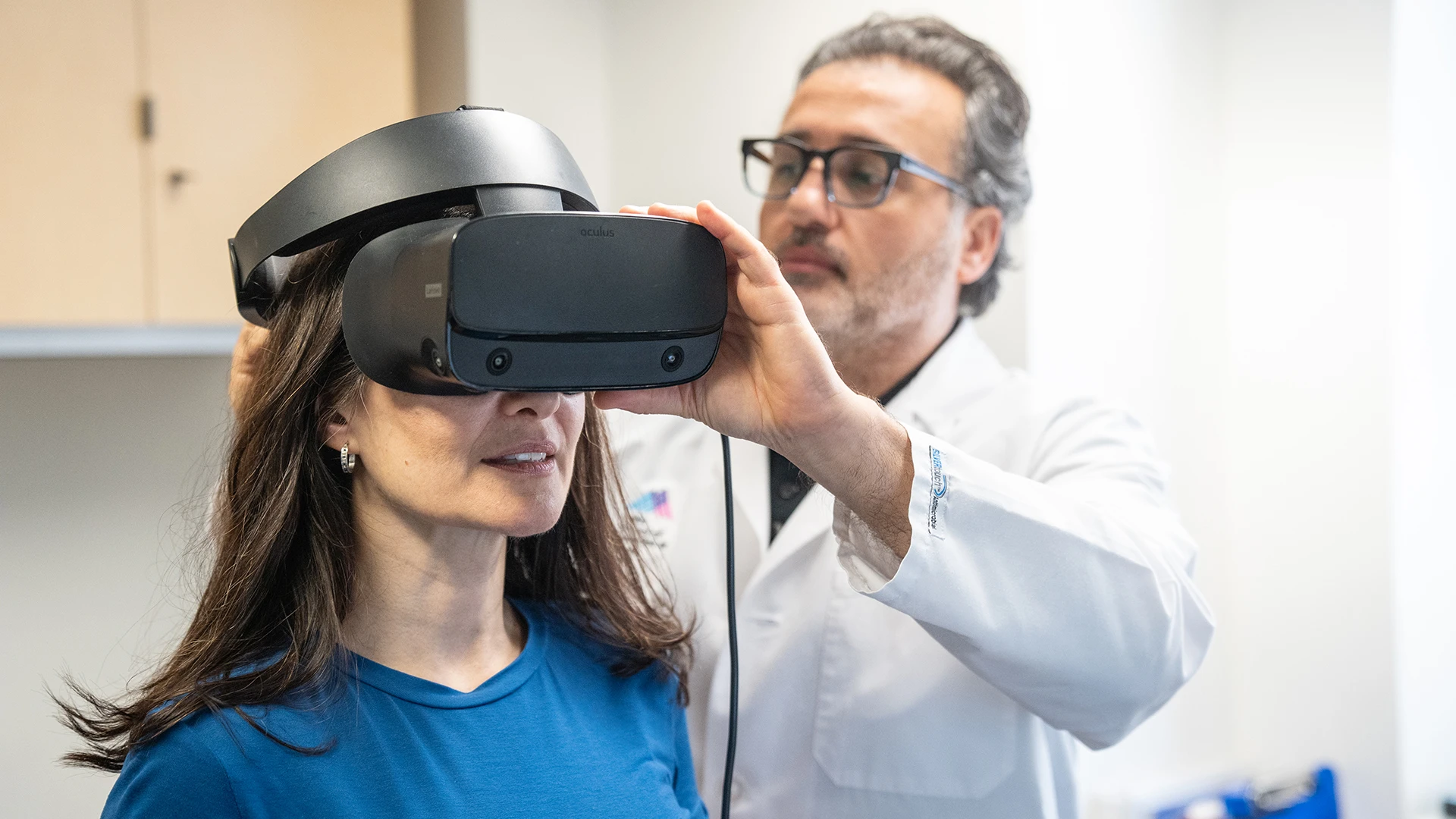
Dr. Daşdöğen placing VR goggles on a patient.
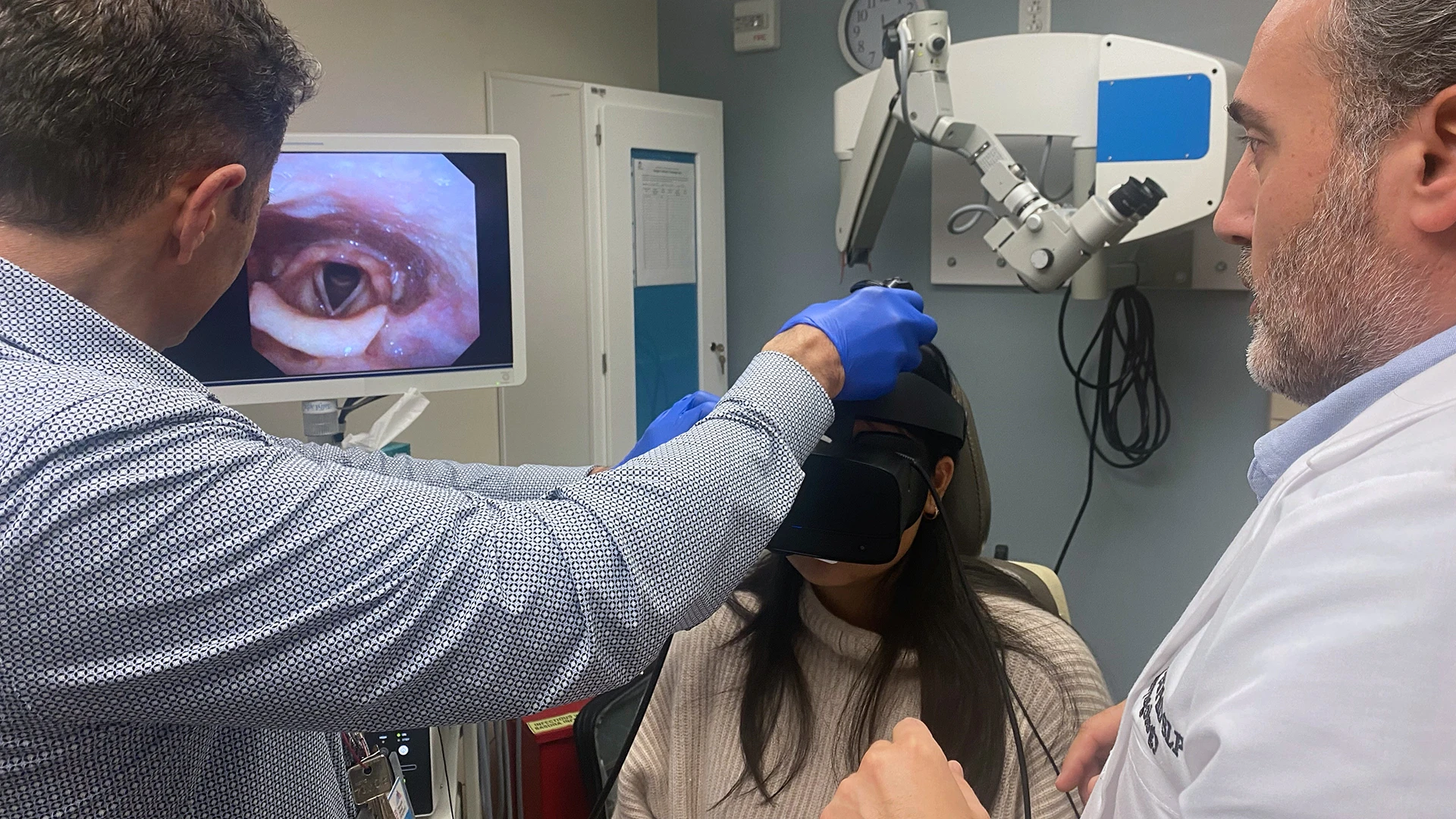
Drs. Daşdöğen (right) and Courey conduct an endoscopic examination to visualize vocal folds while assessing a patient in a VR scenario.
A Study Investigates the Impact of IVR on Voice Therapy
A study led by Dr. Daşdöğen demonstrates the therapeutic potential of IVR in enhancing voice therapy while offering novel insights on the factors that influence both the perception and production of voice. Dr. Daşdöğen recruited 31 vocally healthy participants between the ages of 18 and 50 (mean age 32.4)—20 female and 11 male.
Participants were assessed based on exposure to 18 sensory input conditions. These conditions included two auditory rooms with varying reverberation times, two visual rooms with varying volumes, and the combination of audiovisual conditions. Study participants completed all conditions both with and without background noise. They also engaged in speech tasks including counting, sustained vowel phonation, an all-voiced standardized sentence, and the first sentence from a standard passage, randomly ordered. The participants self-reported perceptions of their vocal loudness, vocal effort, and vocal comfort. Additionally, sound pressure level and spectral moments were used for vocal production measurements.
The study results showed that not only auditory, but also visual and audiovisual input influenced voice perception and production in ways that have not been previously documented. “That is a very novel finding [that] was recognized by The Voice Foundation and the Pan American Vocology Association,” says Dr. Daşdöğen. “More importantly, the findings showed significant audiovisual sensory modality interactions, implying that voice perception and production are modulated multisensorially.”
Specifically, the study results revealed that in conditions where room volume and speaker-listener distance increased, the individuals’ perceived loudness and effort increased, their comfort decreased, the sound pressure level increased, and there were fluctuations in spectral moments. The study, “The Influence of Multisensory Input On Voice Perception and Production Using Immersive Virtual Reality,” was published in the Journal of Voice in September 2023.
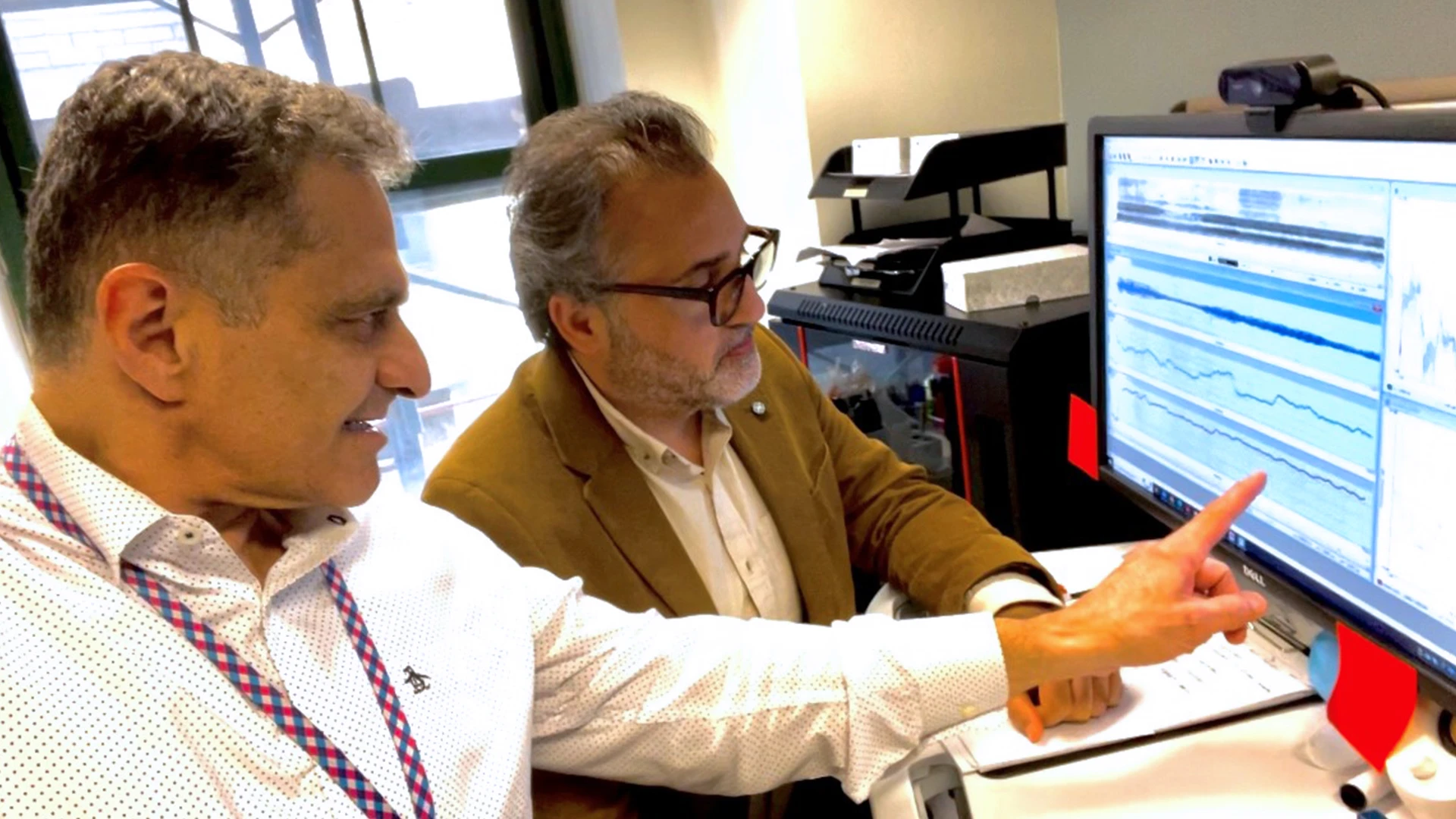
Drs. Daşdöğen (right) and Courey discuss acoustic analysis results.
Exploring the Full Benefits of IVR
Although the findings make a case for IVR and visual input as means to address issues related to generalization in voice and speech training, Dr. Daşdöğen says further research is required to fully assess the benefits. He has begun exploring the effectiveness of voice therapy using IVR among K-12 classroom teachers, a group with a high prevalence of voice disorders, funded by a National Institutes of Health-shared grant. Another study will manipulate audiovisual input with IVR to examine how stress levels affect vocal output and skill acquisition among transgender women. But Dr. Daşdöğen is particularly interested in conducting functional magnetic resonance imaging (fMRI) and functional near-infrared spectroscopy (fNIRS) imaging to see what is happening at the cortical and subcortical levels during IVR-related therapy, which creates opportunities to develop a new therapeutic approach that combines IVR with fNIRS.
“This technology is not just patient-outcomes driven,” says Dr. Courey. “Using neuroimaging techniques, we may be able to perform therapy and show that we are able to achieve better outcomes on a physiological basis by adding the visual input.”
Having established that visual cues are important in vocal output and should be considered in vocal training, Dr. Daşdöğen believes IVR could be successfully adopted in therapeutic approaches for patients presenting with other ENT-related issues. “It could be swallowing disorders, it could be hearing disorders, but what our study shows is that virtual reality, as we understand it, can facilitate better outcomes for therapeutic interventions,” he says.
Featured
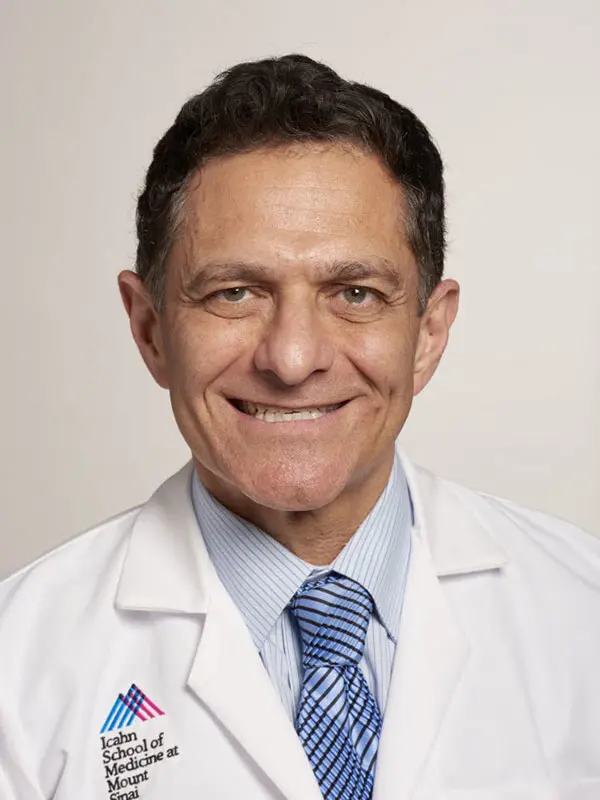
Mark S. Courey, MD
Division Chief of Laryngology, and Vice Chair of Quality, Otolaryngology − Head and Neck Surgery; Director, The Grabscheid Voice and Swallowing Center of Mount Sinai; and Professor, Otolaryngology−Head and Neck Surgery
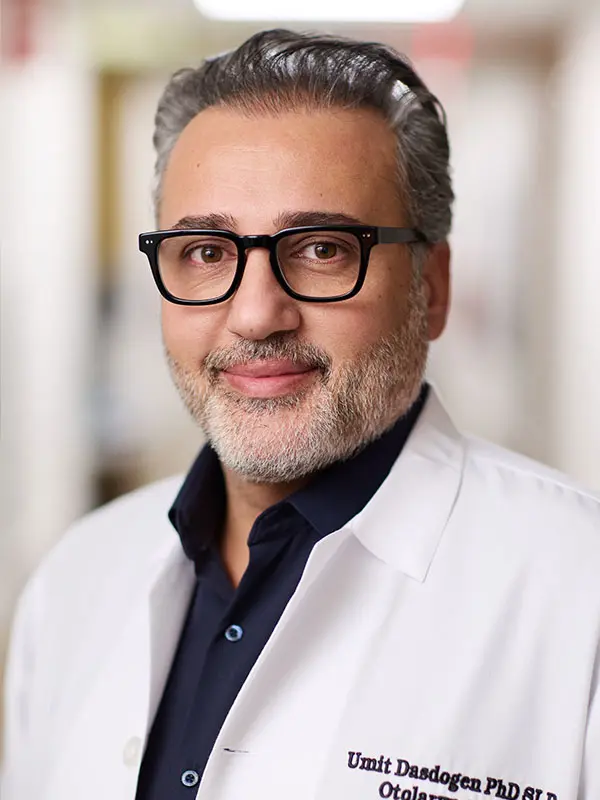
Ümit Daşdöğen, PhD, CCC-SLP
Research Director, Speech and Language Pathology, The Grabscheid Voice and Swallowing Center of Mount Sinai; Assistant Professor, Otolaryngology
